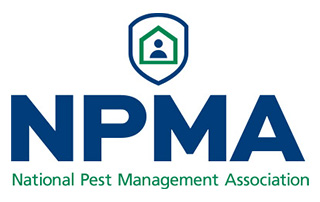SPRINGTAILS CONTROL

Springtails are very small insects; the smallest springtails are about 0.2 mm long, they are among the world’s tiniest insects; while the largest springtails reach a length of only 10 mm. They have six legs, short antennae with four to six segments, and soft, elongated, or roundish bodies.
There are approximately 700 different species of springtails in North America. Many different kinds can be found in a typical backyard. The name springtail comes from the insect’s forked tail, called a furculum, which is found on most species.
Not sure if you have a springtail problem? Or maybe you want to learn more about how springtail control works. Check out the following information to clarify some questions you may have.
Library Shortcuts
- Should I be concerned about Springtails?
- Signs of Springtail’s infestation
- Why do I have Springtails on my property?
- Can I get rid of Springtails myself?
- Tips to prevent Springtails
Should I be concerned about Springtails?
Springtails are harmless; they do not damage anything within the house, but they can be a supreme nuisance because of their large numbers, especially when they fall in while around the pool and are drowned in large numbers, often coating the pool surface. They can also be a nuisance in homes, greenhouses, and other locations where there is a source of moisture. If they are continuously present indoors’, that could be an indicator of moisture in your property.
Some springtail species may damage plants by chewing on the roots and leaves of seedlings. The seedlings may appear wilted and may die if they are young when damaged. Mature plants are not significantly injured by springtails. They rarely cause enough damage to plants to warrant control measures.
Signs of Springtail’s infestation
There is no doubt that there are springtails in your property, they are probably around your home and garden since they are common insects. Springtails need to live in a moist environment to survive. The only sign that you have an infestation of springtails is by seeing the pest itself. Springtails live in moist soil and underneath leaves and grass piles in the outside. If they get inside, springtails are typically found in bathrooms gathered around showers, tubs, and sinks, in kitchens, around window sills, and in damp basements or crawl spaces.
Springtails are often confused with fleas, but it is actually easy to distinguish them. Especially by their body; fleas are flattened from side to side and have very hard bodies while springtails have more rounded. Due to their body characteristics, fleas are difficult to kill by crushing and springtails are easily crushed.

Why do I have Springtails on my property?
Springtails prefer an outdoor environment where they can feed on algae, fungi, and decaying vegetable matter and cannot survive in dry conditions. Certain conditions may encourage springtails to move indoors, the main condition being the change in the weather outside, which probably got too hot or dry for them. The dried soil makes them search out for moist conditions driving them inside your property gathering in areas like garages, basements, or greenhouses.
Some new homes may be infested by springtails shortly after the home is finished. This could be the result of construction materials that are damp and support mold growth that attracts springtails to the wall voids or other hidden locations inside the property.
Can I get rid of Springtails myself?
As it was mentioned before, springtails can be found indoors and outdoors. The following are some DIY methods you can try if you have a small infestation:
- Vacuuming them up will make the infestation more manageable.
- Run a fan or dehumidifier where you’re seeing them.
- Spray vinegar directly on the springtails and spread the vinegar around infested areas with a rag; you can also use bleach in the same way, which will probably give you faster results.
- Wash down the infested surfaces with detergent and water.
- Sprinkle diatomaceous earth where you see them and at possible entries, once you have reduced the moisture in your property, you can use this method with your plants as well.
Tips to prevent Springtails
Preventing an infestation is always easier than getting rid of it. Try the tips listed below:
- Use a fan or dehumidifier to dry out damp areas
- Check plumbing for leaks and repair them
- Manage mulch placement and lawn irrigation carefully
- Check your basement, attic, or crawl spaces for standing water
- Clean up any loose boards or similar materials from damp floors
- Don’t over-water any houseplants in your living areas
- Use a proper vent or fan in the bathroom to reduce humidity
- Remove wet, moldy wood or other moldy items

Want a Free Estimate?
Need to Schedule Service?
Have a Questions?
WHAT WILL WE DO?
Our springtail control process typically consists of the following stages:
- Confirm or discard the existence of springtails in your home through an inspection.
- Identify the factors that may be causing and contributing to the infestation.
- Offer pest control programs to get the problem under control.
- Treat the existing population and prevent future infestations.
What our clients are saying
Our Partners and Awards
Service area
New Jersey:
Ocean County
Essex County
Passaic County
Morris County
Hudson County
Bergen County









